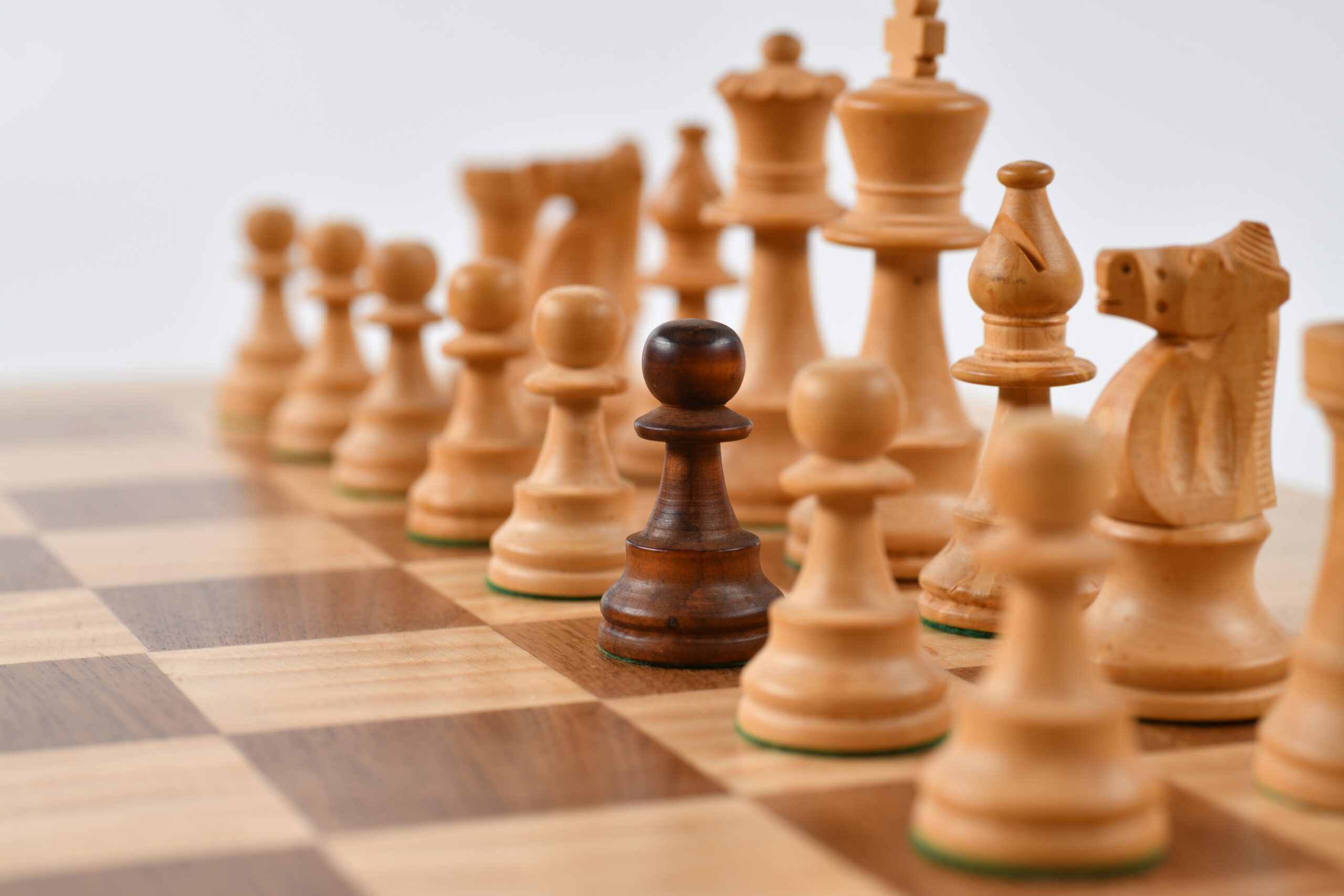Welcome to the world of blitz chess, where speed and precision are paramount. Blitz chess, also known as fast chess, challenges players to make quick decisions and execute moves under time pressure.
In this article, we will explore the best strategies to excel in blitz chess and provide valuable insights to enhance your gameplay. Whether you’re a beginner looking to improve or an experienced player seeking new techniques, this guide will equip you with the knowledge to dominate the fast-paced world of blitz chess.
How does the fast-paced nature of blitz chess impact strategy?
Blitz chess’s rapid time control significantly impacts the strategic approach to the game. In blitz chess, players have a limited amount of time to make all their moves, often ranging from a few minutes to mere seconds per move.
This time constraint forces players to make quick decisions, prioritize tactics over deep calculations, and rely on their intuition. Consequently, strategic planning and long-term thinking take a backseat as players focus on immediate tactical opportunities and practical considerations. The fast-paced nature of blitz chess demands flexibility, adaptability, and the ability to think on your feet.
What are the key principles to consider when playing blitz chess?

While blitz chess may require a more intuitive and tactical approach, certain key principles still hold true. First and foremost, time management is critical. Allocating your time wisely and avoiding unnecessary hesitations can give you a significant advantage over your opponent.
Secondly, maintaining piece activity and development is crucial. In the limited time available, ensuring your pieces are actively placed on strong squares and coordinated effectively can lead to swift and decisive attacks. Lastly, being mindful of the king’s safety is essential. Blitz games often witness aggressive play, and neglecting king safety can lead to devastating consequences. Balancing tactical opportunities with sound positional considerations is key to successful blitz chess.
Is it better to focus on tactics or positional play in blitz chess?
The fast-paced nature of blitz chess often favors tactical play over deep positional maneuvering. In a time-pressured environment, tactical opportunities can arise unexpectedly, and being alert to these possibilities is essential. Strong tactical skills, such as pattern recognition, calculation, and visualization, can give you a significant edge in blitz games.
However, while tactics play a vital role, neglecting positional considerations entirely can be detrimental. Developing your pieces harmoniously, maintaining pawn structures, and recognizing key strategic concepts can provide a solid foundation for your tactical endeavors. Striking a balance between tactics and positional play is the key to mastering blitz chess.
How can time management affect your performance in blitz chess?

Effective time management is a game-changer in blitz chess. Each player has a limited amount of time to make their moves, and how you utilize this time can heavily influence the outcome of the game. Time management involves finding the right balance between speed and accuracy.
While it is important to make quick moves to avoid time pressure, rushing through moves without proper evaluation can lead to blunders. It is crucial to allocate more time for critical positions and complex tactical sequences while identifying opportunities to save time in less critical moments. Practice and experience are vital in developing time management skills, allowing you to make informed decisions swiftly and efficiently.
What are some effective opening choices for blitz chess?
In blitz chess, opening choices need to be practical and efficient. It is advisable to opt for openings that are relatively easy to navigate and have a solid reputation. Openings such as the Sicilian Defense, King’s Indian Defense, or Nimzo-Indian Defense provide dynamic possibilities and active piece play.
Additionally, playing openings with fewer forcing lines or requiring less memorization can save valuable time on the clock. Familiarity with common opening traps, tactical motifs, and plans associated with your chosen openings can give you a competitive advantage. Ultimately, selecting openings that suit your playing style and provide opportunities for active piece play will set you on the right path in blitz chess.
Should you prioritize piece development or quick attacks in blitz chess?
Piece development and quick attacks go hand in hand in blitz chess. While it is essential to develop your pieces harmoniously to establish a strong position, seeking quick attacking opportunities can put pressure on your opponent and force them into making defensive moves under time pressure. Rapid piece development allows you to control the center, secure king safety, and create tactical threats.
However, it is crucial to assess the position and strike the right balance between development and attacking opportunities. Premature attacks without proper preparation can backfire, so weighing the risks and rewards is vital. Patience, accurate calculation, and evaluation of the position are key when deciding whether to prioritize piece development or launch a quick attack in blitz chess.
What are the pros and cons of aggressive versus defensive play in blitz chess?

Aggressive and defensive play both have their merits and drawbacks in blitz chess. Aggressive play can put pressure on your opponent, force them to make difficult decisions and create tactical complications. By launching quick attacks and exploiting tactical opportunities, aggressive players can often catch their opponents off guard.
However, aggressive play requires accurate calculation, fast decision-making, and the ability to handle time pressure effectively. On the other hand, defensive play focuses on solid piece development, minimizing weaknesses, and countering the opponent’s aggression.
Defensive players aim to neutralize their opponent’s attacks and capitalize on any mistakes made under time pressure. Defensive play requires resilience, positional understanding, and the ability to absorb pressure. Ultimately, the choice between aggressive and defensive play in blitz chess depends on your playing style, the position on the board, and your opponent’s tendencies.
How important is board visualization in blitz chess?
Board visualization is crucial in blitz chess, where time constraints limit the opportunity for deep calculations. Having a strong ability to visualize the board and accurately assess potential moves and resulting positions is a significant advantage. Visualization allows you to mentally simulate variations and anticipate tactical opportunities.
Developing this skill requires practice and experience. Regularly solving chess puzzles, playing blindfolding chess, and analyzing positions without a physical board can improve your board visualization abilities. By honing this skill, you can make quicker decisions, identify tactical possibilities, and exploit your opponent’s weaknesses more effectively in blitz chess.
Here’s a comparison table that provides value to the reader about the topic of blitz chess:
| Tactics | Advantages | Disadvantages |
|---|---|---|
| Piece Sacrifice | Creates unexpected threats and confusion | Requires accurate calculation and evaluation of risk |
| King’s Safety | Protects against potential checkmate threats | Restricts the mobility of the king and requires careful positioning |
| Time Management | Enables efficient use of limited time | This may lead to rushed decisions or overlooking important moves |
| Piece Activity | Maximizes the potential of each piece | Requires careful coordination and planning |
| Tactical Vision | Allows spotting quick winning opportunities | Can be challenging under time pressure |
This table highlights some key tactics and elements that are important in blitz chess. It outlines the advantages and disadvantages of each tactic, giving the reader valuable insights into their application and potential risks.
Are there specific strategies for handling time pressure in blitz chess?
Time pressure is an inherent part of blitz chess, and effectively managing it can be a game-changer. Here are some strategies to handle time pressure:
- Familiarize yourself with common tactical patterns: By recognizing common tactical motifs such as forks, pins, and skewers, you can spot opportunities quickly and save time on calculation.
- Develop a repertoire of quick and effective opening moves: Having a set of opening moves that you are comfortable with and have practiced extensively can save valuable time in the early stages of the game.
- Trust your instincts: In time-critical situations, relying on your intuition and making instinctive moves can help you maintain a steady pace and prevent unnecessary time consumption.
- Practice speed chess: Regularly playing speed chess, where time controls are even faster than blitz, can help you acclimate to time pressure and improve your decision-making speed.
- Maintain composure: It is easy to succumb to panic under time pressure. Stay calm, focus on the position, and make deliberate moves to avoid costly errors.
By implementing these strategies, you can handle time pressure more effectively and maintain a competitive edge in blitz chess.
How can you exploit your opponent’s weaknesses in a limited time frame?
Identifying and exploiting your opponent’s weaknesses is a crucial aspect of blitz chess. In a limited time frame, it becomes even more important to exploit any vulnerabilities your opponent may have. Here are some strategies to consider:
- Identify pawn weaknesses: Look for isolated pawns, backward pawns, or pawn chains that can be targeted and exploited. Focus your attacks on these weak points to gain an advantage.
- Exploit piece coordination issues: If your opponent’s pieces lack coordination or are poorly placed, look for tactical opportunities to exploit their disarray. Forks, pins, and skewers can be particularly effective in these situations.
- Capitalize on tactical oversights: In the fast-paced nature of blitz chess, mistakes are more likely to occur. Stay vigilant and be ready to seize any tactical oversights or blunders made by your opponent.
- Create time pressure: By consistently making strong moves and keeping the pressure on your opponent, you can force them into making hasty decisions and potentially making mistakes under time pressure.
- Play to their weaknesses: If you notice your opponent struggling with certain types of positions or structures, steer the game in that direction to exploit their weaknesses.
By being attentive, strategically astute, and proactive in identifying and capitalizing on your opponent’s weaknesses, you can tilt the game in your favor and secure victories in blitz chess.
Are there any specific tactics or patterns that work well in blitz chess?
Blitz chess is known for its fast-paced, tactical nature, making certain tactics and patterns particularly effective. Some of these tactics and patterns include:
- Forks: Attacking two pieces simultaneously, forcing your opponent to choose which one to save.
- Pins: Restricting the movement of a piece, often targeting an important defender.
- Skewers: Attacking a valuable piece, forcing a less valuable piece to move, and allowing you to capture the former.
- Discovered Attacks: Moving a piece to reveal an attack by another piece, often leading to material gains or tactical advantages.
- Double Attacks: Simultaneously threatening multiple pieces, forcing your opponent into a disadvantageous position.
- Back-Rank Weakness: Exploiting the vulnerability of your opponent’s back rank by utilizing back-rank mates or skewers.
- Windmill: A series of discovered attacks and checks that force the opponent’s king to move repeatedly, often resulting in material gain.
- Sacrifices: Tactical sacrifices to open up lines, create attacking opportunities, or expose the opponent’s king.
By familiarizing yourself with these tactics and practicing them through solving puzzles or studying annotated games, you can sharpen your tactical skills and capitalize on these patterns in blitz chess.
Is it better to simplify the position or complicate it in blitz chess?
The decision to simplify or complicate the position in blitz chess depends on the specific circumstances. Simplifying the position can be beneficial when you have a material or positional advantage. By exchanging pieces, you reduce the complexity of the position and minimize the chances for your opponent to create counterplay.
Simplification can also be useful if you’re under time pressure and seeking a safer and more manageable position to navigate. Additionally, simplifying the position can help you convert your advantage efficiently and secure the win.
On the other hand, complicating the position can be advantageous if you need to create tactical opportunities or exploit your opponent’s weaknesses. By introducing complexities, you force your opponent to make precise moves under time pressure, increasing the chances of them making mistakes.
Complications can also make it more challenging for your opponent to find the best moves and calculate accurately, putting them on the defensive. However, it is crucial to assess the position accurately and consider the risks involved in complicating the position. While complications can offer opportunities, they can also backfire if not handled correctly.
Ultimately,
In the high-octane world of blitz chess, speed, and precision reign supreme. Successful blitz chess players employ effective time management strategies, prioritize tactical play, and strike a balance between aggression and positional considerations.
By developing strong board visualization skills, leveraging common tactics and patterns, and capitalizing on your opponent’s weaknesses, you can gain a competitive edge. Whether you choose to simplify or complicate the position, make strategic decisions based on the specific circumstances and assess the risks involved. With dedication, practice, and a dash of intuition, you can navigate the challenges of blitz chess and enjoy the thrill of lightning-fast victories.




